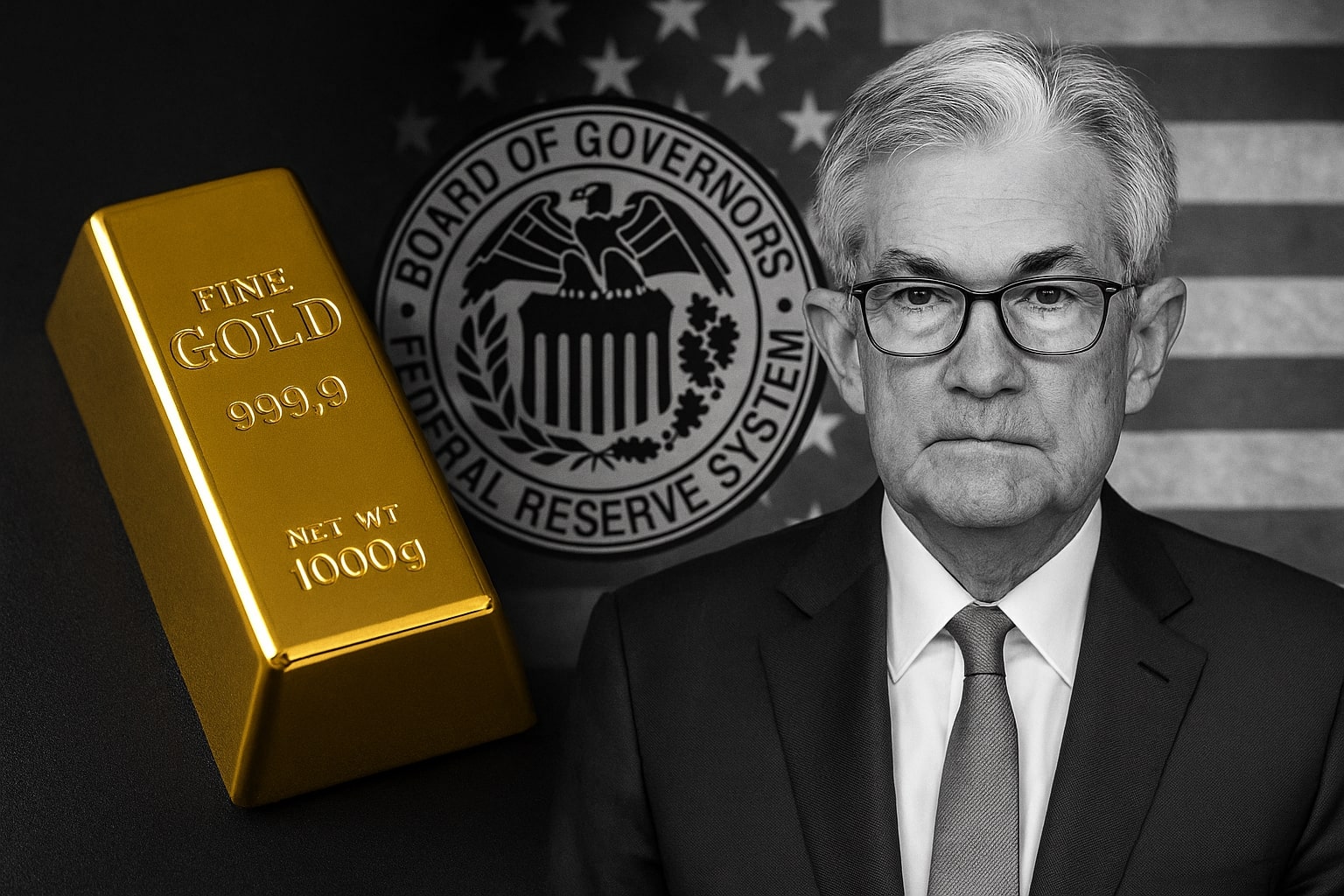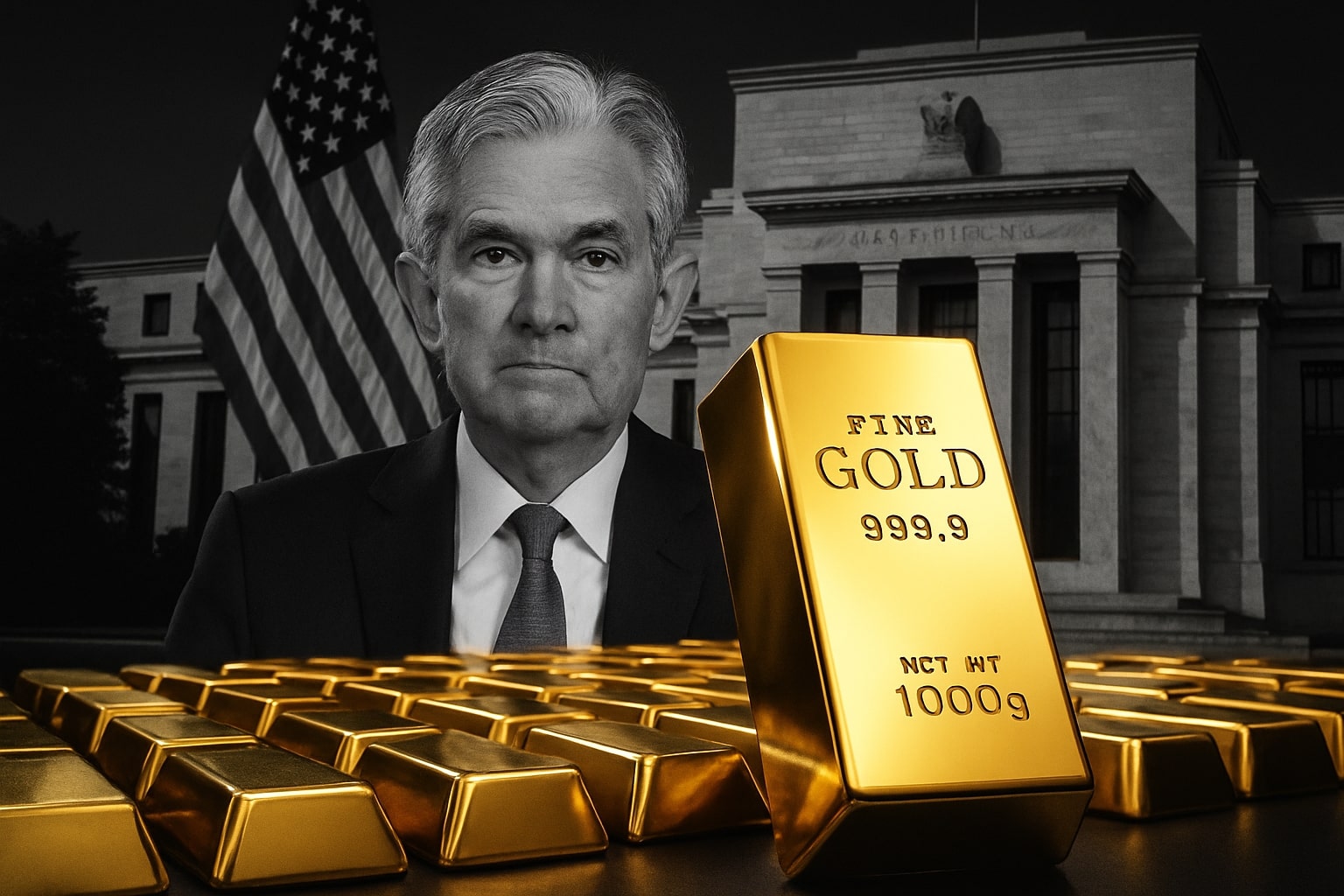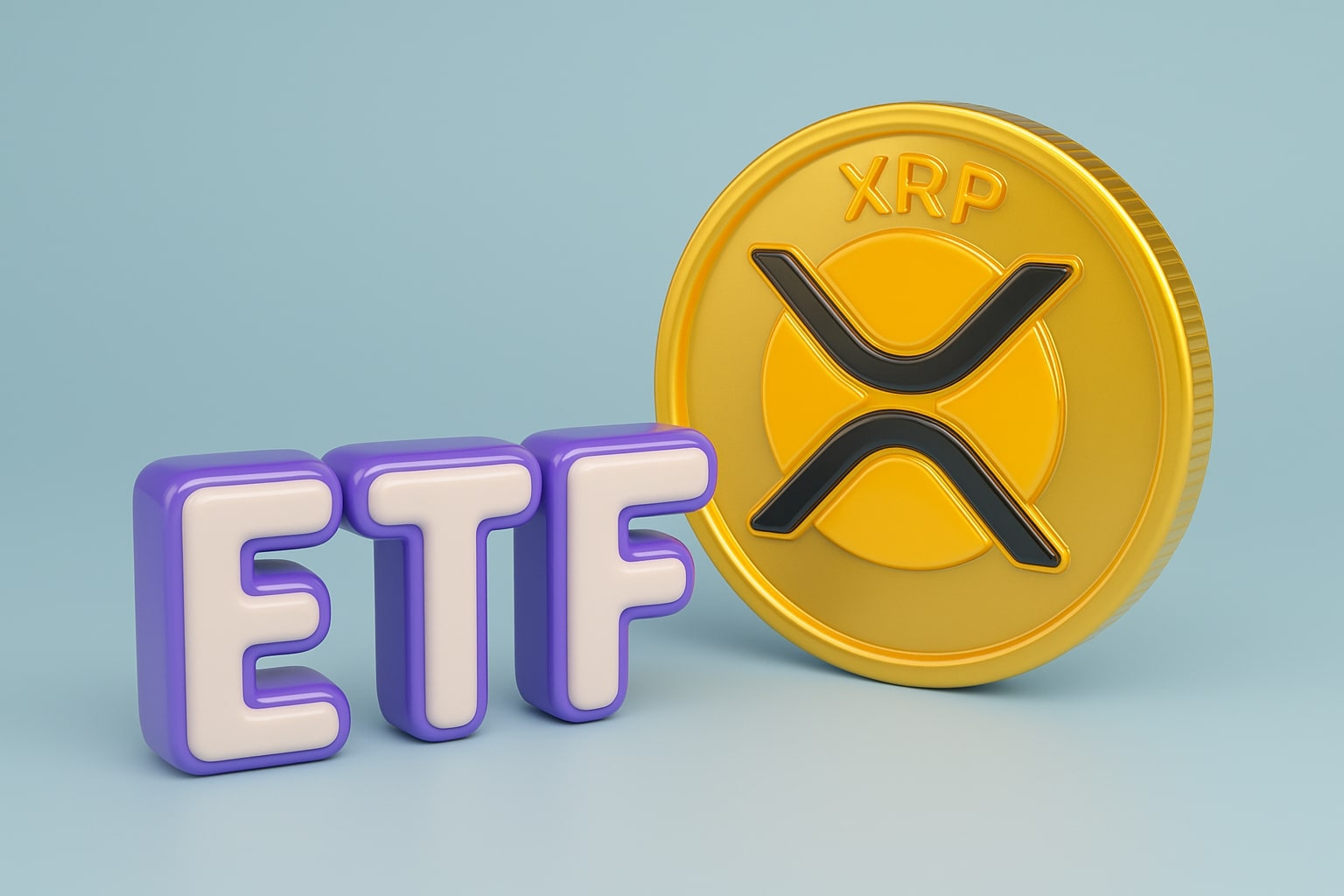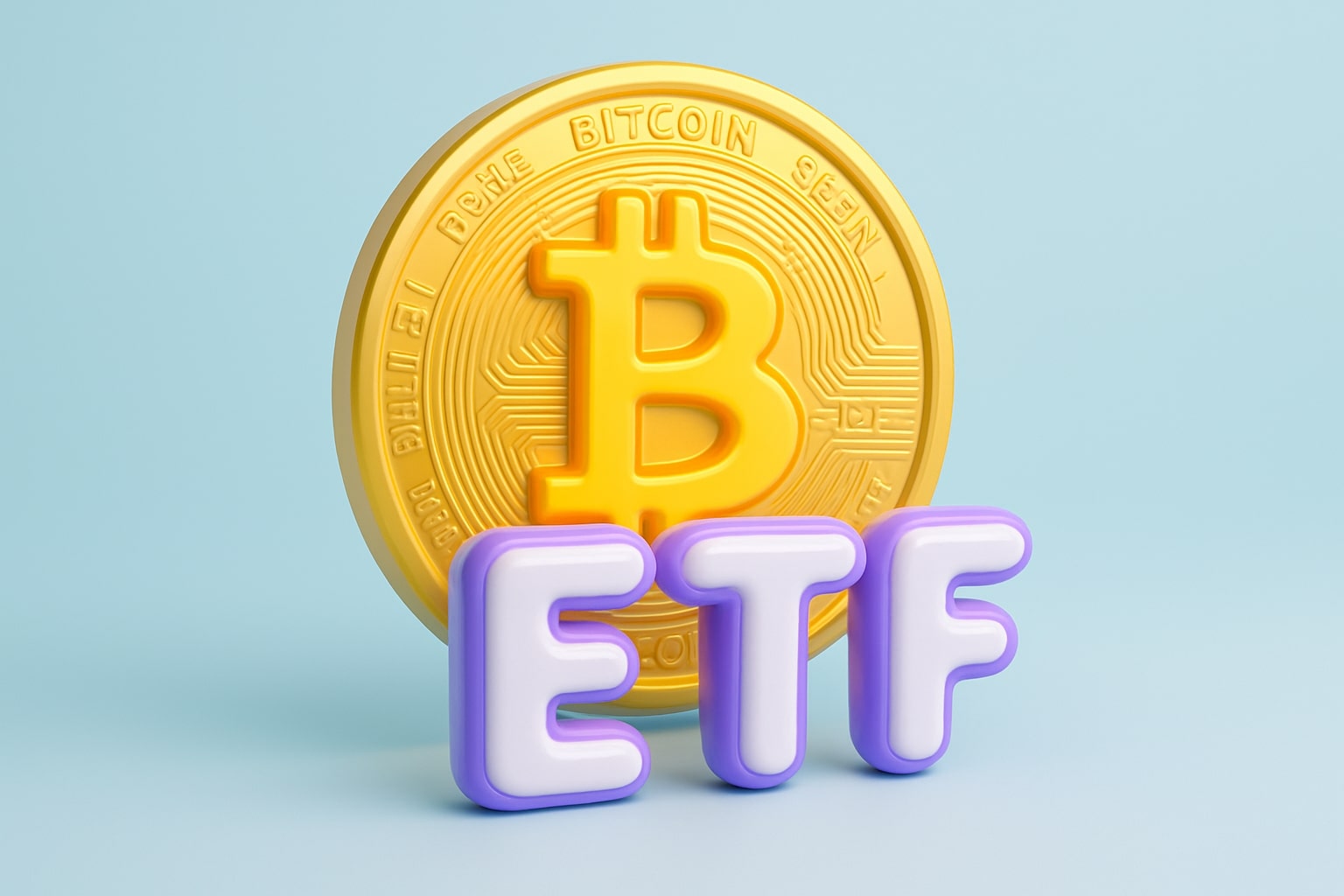Gold (XAU/USD) Surges Past $4,000 as Rate Cut Bets, Central Bank Buying, and Dollar Weakness Extend the Bull Run
Gold (XAU/USD) maintained its record-breaking climb on Friday, trading near $4,022.50 per ounce after touching an all-time high of $4,059.05 earlier in the week. The metal has now advanced nearly 50% year-to-date, its sharpest annual surge since the 1970s. The move reflects a confluence of macro catalysts — renewed U.S. rate cut expectations, geopolitical risk unwinding, accelerating central bank accumulation, and a weakening U.S. dollar. The rally has cemented gold’s position as the market’s premier hedge as traders brace for fiscal dysfunction and structural inflation in the world’s largest economy. The metal has not only doubled from the $2,000/oz level seen two years ago but has now outperformed the S&P 500 (^GSPC) by a multiple of six since 2000, delivering a cumulative return exceeding 1,200% over 25 years.
Federal Reserve Outlook and Political Tension Fuel Safe-Haven Demand
The ongoing U.S. government shutdown, now entering its tenth day, has paralyzed major data releases and intensified the safe-haven bid. Minutes from the Federal Reserve’s September meeting revealed policymakers are leaning toward two 25 bp rate cuts — one in October and another in December — to stabilize the labor market after consecutive weak employment indicators. These expectations sent the U.S. 10-year Treasury yield down toward 4.09%, weakening the dollar index (DXY) to 98.69 (-0.59%), making gold cheaper for overseas buyers. Traders are increasingly positioning for an early 2026 easing cycle, with futures pricing in an additional 75 bp in cumulative cuts by midyear. Fed commentary has amplified the rally’s velocity; Governor Waller stated, “Something’s got to give — either growth slows or the labor market rebounds,” which investors interpreted as dovish. Combined with fiscal strain from tariff-driven revenue gaps, gold’s fundamental tailwinds remain firmly in place.
Central Bank Accumulation Becomes Structural Driver of XAU/USD
One of the strongest underlying forces sustaining gold’s ascent is the record pace of central bank purchases. According to the World Gold Council, global reserves expanded by a net 15 tonnes in August following a flat July, marking the third consecutive year of net buying exceeding 1,000 tonnes. The National Bank of Poland has emerged as the most aggressive accumulator in 2025, adding 67 tonnes year-to-date and raising its strategic target from 20% to 30% of total reserves — bringing holdings to 515 tonnes. Kazakhstan, Bulgaria, and El Salvador all reported new monthly additions, while China’s central bank logged its 11th consecutive month of purchases, adding 1.24 tonnes in September and bringing total holdings to 2,303.5 tonnes (approximately 74.06 million troy ounces). Since resuming acquisitions in November 2024, China has absorbed 39.2 tonnes, reinforcing gold’s de-dollarization narrative. ING’s commodities desk projects that this diversification trend will persist, citing “economic fragmentation and sovereign hedging against currency debasement.”
Technical Positioning: Overextended Yet Structurally Bullish
From a technical standpoint, gold remains in a powerful uptrend with structural momentum intact despite near-term overbought signals. The metal’s Relative Strength Index (RSI) sits near 73, mirroring levels seen during the 2011 and 2020 breakouts, but volume-based momentum remains positive. The breakout above $3,800 confirmed the completion of an ascending triangle pattern, projecting a measured move toward $4,200 in the near term. Short-term resistance is now established at $4,080, with interim support layered at $3,980, $3,800, and $3,650. Analysts view any retracement toward $3,800 as a high-probability accumulation zone, underpinned by deep ETF inflows and robust physical demand. U.S. futures (GC=F) for December delivery have followed spot prices higher, last trading near $4,001.50 (+0.7%). Technical models suggest that sustaining above the $4,000 psychological barrier for two consecutive sessions could open room toward $4,300–$4,500, the next Fibonacci projection range from the 2024 base pattern.
Institutional Flows and ETF Demand Reinforce Bullish Sentiment
ETF holdings of gold have expanded aggressively alongside central bank purchases. Total global gold ETF assets are now valued above $240 billion, with U.S.-listed funds contributing over half that figure. Data from Bloomberg show net inflows of $8.2 billion into physically-backed ETFs in Q3 2025 alone, reversing six straight quarters of net outflows. Institutional allocation models continue to rotate toward gold and silver at the expense of equities, particularly after the Nasdaq (^IXIC) and Dow Jones (^DJI) each lost more than 1% during the week’s final session. ING’s forecast for an average XAU/USD price of $4,150/oz in 2026 and a $4,000 Q4 2025 mean points to sustained support from asset managers increasing gold’s weighting as a portfolio hedge against rate volatility and geopolitical noise.
Global Geopolitics and the “Peace Dividend” Effect on Bullion Pricing
While much of gold’s premium has stemmed from war-related risk, markets are beginning to recalibrate as diplomatic momentum improves in key regions. A tentative ceasefire in Gaza and signs of detente in Eastern Europe have partially removed the geopolitical premium embedded in prior months’ pricing. Analysts describe this as a “peace dividend factor” — a moderation of volatility-driven buying without derailing the broader uptrend. Neil Wilson, strategist at Saxo Markets, highlights that gold’s long-term trajectory “still looks good,” noting that the average gain across four historical bull markets was approximately 300% in 43 months, implying a potential $6,000 peak by spring 2026. Investors are also front-running expectations around the next Federal Reserve Chair appointment, which could mark a transition to structurally looser monetary conditions. Treasury Secretary Scott Bessent reportedly concluded the first interview round for the position this week, with market participants anticipating a dovish successor, further entrenching bullion demand.
Silver, Platinum, and Palladium Mirror Precious Metals Momentum
The rally is not isolated to gold. Silver (SI=F) jumped 1.7% to $49.95/oz, just below Thursday’s record $51.22 high, extending its 73% year-to-date gain. The metal’s spot-futures backwardation — where spot trades at a premium to futures — signals extreme physical demand outstripping paper supply. Alex Ebkarian, COO of Allegiance Gold, described it as “a loud signal that physical demand is crushing synthetic markets.” Platinum (PL=F) rose 0.6% to $1,628.75, while palladium (PA=F) gained 3.8% to $1,464.51, both heading for solid weekly gains. The synchronized rally across precious metals reinforces a structural theme: the global appetite for tangible stores of value as monetary policy and political trust wane simultaneously.
Regional Trends: Asia and Local Market Impact
In the Philippines, gold prices slipped marginally due to currency appreciation, with local gold at PHP 7,410.49 per gram and PHP 230,497.70 per troy ounce, compared with PHP 7,441.53 a day earlier. The price of gold per tola eased to PHP 86,438.98, reflecting local currency adjustment against the U.S. dollar rather than any change in international fundamentals. Asian markets remain critical to gold’s physical demand, accounting for nearly 60% of global jewelry and bar purchases. India’s upcoming festival season and China’s ongoing reserve expansion are expected to sustain this baseline demand, further anchoring global support above $3,800/oz.
Macro Environment: Inflation, Dollar Weakness, and Trade War Effects
Gold’s ongoing surge is inseparable from the wider macro context. President Trump’s renewed tariff escalation on Chinese and European goods has triggered a flight from risk assets, reviving the classic gold hedge. Inflation expectations have crept higher — U.S. breakeven inflation rates climbed to 2.45%, while European inflation remains above 3%, pushing investors into non-yielding assets immune to currency depreciation. The government shutdown’s continuation has amplified fears of delayed fiscal payments and rating downgrades. As fiscal uncertainty grows, so does gold’s strategic role: a liquidity reserve independent of political compromise. ING analysts summarized this dynamic by labeling the metal “the collateral of last resort.”
Trading Outlook and Market Psychology
Despite overbought conditions, institutional traders remain heavily positioned on the long side of gold futures, with net managed-money longs at 190,000 contracts, up 22% month-over-month. Options data show elevated call open interest at $4,100–$4,200, suggesting traders expect limited upside exhaustion. Retail participation has surged through gold-backed ETFs and fractional bullion programs, while speculative profit-taking remains modest relative to historical peaks. Behavioral data indicate that fear of missing out is now being replaced by methodical rebalancing — traders locking partial profits yet maintaining core exposure in anticipation of rate cuts and inflation resilience.
Outlook and Verdict: Structural Bull Market, Temporary Cooling Likely
Gold’s current structure remains bullish. The blend of weakening dollar fundamentals, dovish monetary expectations, record sovereign buying, and strong ETF inflows justifies sustained elevation above $4,000. Short-term technical overextension could trigger a brief correction toward $3,850–$3,900, but underlying demand suggests any dip will attract aggressive re-entry. ING’s 2026 target of $4,150 is conservative relative to historical bull cycles, and several institutional forecasts already price potential peaks beyond $5,000 if central bank diversification accelerates.
Verdict: XAU/USD – Buy on Dips (Bullish Bias)
Near-term range: $3,950–$4,100
Key supports: $3,800 / $3,650
Upside targets: $4,200 → $4,500 (mid-term), $6,000 (extended bull target)
Gold remains the defining hedge of the 2025–2026 macro era — not just a refuge from chaos, but a direct reflection of fading trust in fiat stability, policy coherence, and global fiscal discipline.
That's TradingNEWS




















